With new technologies revolutionizing data collection, wildlife researchers are becoming increasingly able to collect data at much higher volumes than ever before. Now we are facing the challenges of putting this information to use, bringing the science of big data into the conservation arena. With the help of machine learning tools, this area holds immense potential for conservation practices. The applications range from online trafficking alerts to species-specific early warning systems to efficient movement and biodiversity monitoring and beyond.
However, the process of building effective machine learning tools depends upon large amounts of standardized training data, and conservationists currently lack an established system for standardization. How to best develop such a system and incentivize data sharing are questions at the forefront of this work. There are currently multiple AI-based conservation initiatives, including Wildlife Insights and WildBook, that are pioneering applications on this front.
This group is the perfect place to ask all your AI-related questions, no matter your skill level or previous familiarity! You'll find resources, meet other members with similar questions and experts who can answer them, and engage in exciting collaborative opportunities together.
Just getting started with AI in conservation? Check out our introduction tutorial, How Do I Train My First Machine Learning Model? with Daniel Situnayake, and our Virtual Meetup on Big Data. If you're coming from the more technical side of AI/ML, Sara Beery runs an AI for Conservation slack channel that might be of interest. Message her for an invite.
Header Image: Dr Claire Burke / @CBurkeSci

Explore the Basics: AI
Understanding the possibilities for incorporating new technology into your work can feel overwhelming. With so many tools available, so many resources to keep up with, and so many innovative projects happening around the world and in our community, it's easy to lose sight of how and why these new technologies matter, and how they can be practically applied to your projects.
Machine learning has huge potential in conservation tech, and its applications are growing every day! But the tradeoff of that potential is a big learning curve - or so it seems to those starting out with this powerful tool!
To help you explore the potential of AI (and prepare for some of our upcoming AI-themed events!), we've compiled simple, key resources, conversations, and videos to highlight the possibilities:
Three Resources for Beginners:
- Everything I know about Machine Learning and Camera Traps, Dan Morris | Resource library, camera traps, machine learning
- Using Computer Vision to Protect Endangered Species, Kasim Rafiq | Machine learning, data analysis, big cats
- Resource: WildID | WildID
Three Forum Threads for Beginners:
- I made an open-source tool to help you sort camera trap images | Petar Gyurov, Camera Traps
- Batch / Automated Cloud Processing | Chris Nicolas, Acoustic Monitoring
- Looking for help with camera trapping for Jaguars: Software for species ID and database building | Carmina Gutierrez, AI for Conservation
Three Tutorials for Beginners:
- How do I get started using machine learning for my camera traps? | Sara Beery, Tech Tutors
- How do I train my first machine learning model? | Daniel Situnayake, Tech Tutors
- Big Data in Conservation | Dave Thau, Dan Morris, Sarah Davidson, Virtual Meetups
Want to know more about AI, or have your specific machine learning questions answered by experts in the WILDLABS community? Make sure you join the conversation in our AI for Conservation group!
No showcases have been added to this group yet.
PhD student in animal biology working on AI for wildlife conservation

- 0 Resources
- 1 Discussions
- 7 Groups
- @srfreeze
- | He/Him
I am a wildlife expert with a decade of experience working with bats and proven success in efforts to study, manage, and conserve the species. I work at the nexus of advanced technologies and deep ecological understandings to provide effective solutions to government, academic, a
- 0 Resources
- 0 Discussions
- 11 Groups
- @mr.kite
- | he/him
Environmental Specialist working with bird surveys and impact assessment. Here I'm focused on acoustic recording technologies and acoustic data analysis for birds.
- 0 Resources
- 0 Discussions
- 8 Groups
- @malikmorg
- | He/Him
Software Developer
Interested in all things technology, system design, and hardware, especially in the spaces of conservation, exploration, and the environment.
- 0 Resources
- 0 Discussions
- 10 Groups
- @Lekan2881
- | He
I'm Lekan Agboola, a nature enthusiast currently pursuing a B.Agric Tech in Ecotourism and Wildlife Management.
- 0 Resources
- 0 Discussions
- 3 Groups
- @wendyhaeco
- | She/Her/Hers
Ecologist focused on wetland restoration in freshwater wetlands of the northeast USA
- 0 Resources
- 0 Discussions
- 2 Groups
- 0 Resources
- 0 Discussions
- 7 Groups
- 0 Resources
- 0 Discussions
- 4 Groups
We strive to shine a light on the achievements of bioacoustics research in Africa. We work towards equal representation and access to crucial learning, training, and networking opportunities in bioacoustics in Africa.
- 0 Resources
- 0 Discussions
- 7 Groups
- 0 Resources
- 0 Discussions
- 4 Groups
- @fabiola
- | She/her
- 0 Resources
- 0 Discussions
- 5 Groups
"As co-founder of IMPACT Madagascar and a geologist with extensive experience in GIS, I believe technology plays an important role in both environmental conservation and sustainable community development."
- 0 Resources
- 0 Discussions
- 3 Groups
Join the FathomNet Kaggle Competition to show us how you would develop a model that can accurately classify varying taxonomic ranks!
4 March 2025
Up to 48 months contract - 14+22 (+12) | Belvaux
25 February 2025
Up to 6 months internship position to work on DiMON project which aims to develop a non-lethal, compact device that, when coupled with traditional entomological traps, captures high-resolution, multi-view insect images...
25 February 2025
Link
Using advanced AI technology, GhostNetZero.ai analyzes the collected sonar data to identify specific locations where ghost nets are likely to be found. This enables the recovery of these abandoned nets and helps to rid...
13 February 2025
workshop introduced participants to the power of bioinformatics and next-generation sequencing (NGS) in conservation biology.
10 February 2025
Teaching Children about Empathy for the Endangered Species and for Nature Conservation In celebration of the Earth Conservation Day, @veracityhouse in collaboration with the Nature Conservation Foundation trained...
10 February 2025
Lake Nakuru National Park is one of the first rhino sanctuaries in Kenya where Artificial-Intelligence enabled Forward Looking Infrared (FLIR) camera systems were installed to help curb the escalating poaching of black...
8 February 2025
New paper - "acoupi integrates audio recording, AI-based data processing, data management, and real-time wireless messaging into a unified and configurable framework. We demonstrate the flexibility of acoupi by...
7 February 2025
Careers
Strategic Protection Of Threatened Species (NGO) is looking for engineering interns at the Dinokeng Game Reserve, South Africa
6 February 2025
Live and work in sunny San Diego for the summer, contributing to engineering projects as they relate to conservation technology.
6 February 2025
The Conservation Technology Laboratory within the Population Sustainability department is seeking two fellows for summer 2025
5 February 2025
August 2025
event
September 2025
event
event
event
event
October 2025
event
event
event
December 2025
event
March 2026
December 2023
event
17 Products
Recently updated products
| Description | Activity | Replies | Groups | Updated |
|---|---|---|---|---|
| Hi Ollie, Great article, thank you! I mostly work with responsible AI in other contexts, at Doteveryone.org.uk and the Trust & Technology Initiative at the... |
|
AI for Conservation | 6 years 5 months ago | |
| In case you missed it, last year the British Ecological Society published A Guide to Reproducible Code in Ecology and Evolution... |
|
AI for Conservation | 7 years 4 months ago | |
| Hey Steffen, I know you've had a student working on this challenge for the past year - how is this project progressing? If you (or your student) have a moment,... |
|
AI for Conservation | 7 years 9 months ago | |
| Hi Kate, It's really exciting to hear that you've now launched the challenge, congratulations on getting to this point! It's going to be interesting to... |
|
AI for Conservation | 7 years 10 months ago | |
| If you're interested, you can check out the live recordings from past events (links below take you to the videos): August: The Blockchain The Blockchain's potential... |
|
AI for Conservation | 7 years 10 months ago | |
| Hypraptive and Brown Bear Research Network collaboration to develop a deep learning, brown bear face identification system: BearID Project. [Disclosure: I am a member of... |
|
AI for Conservation | 7 years 11 months ago | |
| It looks like they haven't updated for a couple of years do you know if it is still active or are they changing to a different system like tensor flow? |
|
AI for Conservation | 7 years 11 months ago | |
| Here' s a press release we put out today talking about how we're using a deep convolutional neural network to find and curate whale... |
|
AI for Conservation | 8 years 2 months ago | |
| For those interested: in the acoustics channel I have posted news on our sound event recognition sensor, using conv-net: https://... |
|
AI for Conservation | 8 years 3 months ago | |
| Ah! Thanks for posting this Tom. It's such a well designed, simple to understand video series, and the backing track is utterly delightful. Given the... |
|
AI for Conservation | 8 years 4 months ago | |
| Hello all, I'm looking at using a combination of machine learning and satellite imagery to identify and count individual animals,... |
|
AI for Conservation | 8 years 10 months ago | |
| We are working on the identification of the threats along the flyway of the Egyptian vulture, endangered vutlure species migrating from... |
|
AI for Conservation | 9 years 2 months ago |
Tech Tutors: How do How do I launch machine learning projects using MLOps?
3 February 2021 12:08pm
Seeking interviewees - AI in Conservation & nonprofits
9 December 2020 6:20am
16 January 2021 7:13am
Hi @Alex.L , I would suggest the same as for @mattzig at https://www.wildlabs.net/community/thread/1046#post-4348 :
I could try to connect you with some of the people and orgs we have worked with. If you go through https://www.vizzuality.com/project/ and identify the projects you would like to be look into, I can then try to connect you with the best person for each project.
And I would be very interested in learning more about your research group's work, besides your current research question, if possible!
Happy New Year! Luisa
28 January 2021 6:40am
HI Luisa,
Thank you so much for your help! I will definitely take a look at your organisation project list. I will be messaging you directly shortly. I would be glad to discuss my research group if it interest you.
Best,
Alex
4 February 2021 3:48pm
Hi Alex, that sounds great! Feel free to email me at luisa.teixeira@vizzuality.com, that may be simpler.
Tech Tutors: How do I start a Tech4Wildlife collaboration?
28 January 2021 12:55pm
28 January 2021 6:22pm
One barrier that was discussed in the presentation was the "risk" or uncertainty of a payoff when talking to potential funders. It seems to me that the "risk" factor of collaborations like this, for funders, would be analogous to the investment and payoff when developing a genomics program. Relative to traditional field research, it takes a much greater investment in time, with different expertise, to create a reference genome for a species of interest and then pull SNPs, etc. Nevertheless, funders seem to recognize the potential for genomic research and genomic tools. Do you think that greater openness to “risk” in conservation genomics results from closer intellectual proximity (i.e., molecular biology vs organismal biology), or to conservation genomics being a more mature field (i.e., more examples of success), or to other factors? If intellectual proximity is a key factor, then conservation tech collaborations will continue to face this barrier, but if lack of successful examples are a key factor, then perhaps this barrier will become less of an issue for conservation tech in the future. Thoughts?
30 January 2021 2:26am
Hi. Just watched the Youtube version (I'm in the unable to watch live hemisphere) and wanted to say that was a great talk. I wish it could have gone for another hour. I liked hearing about the issues and concerns from Melanie on the biology/ecology side. Also could totally relate to what Ed was talking about from the tech side about how it's difficult to have long term collaborations since there isn't really a conservation technology career path at the moment.
I think one of the things we're trying to do with courses like Build Your Own Datalogger is to get people involved in wildlife/conservation side more comfortable with the tech. The goal is to hopefully build a shared repository of technical knowledge that people in the wildlife community can contribute to and benefit from.
Akiba
Protecting Wildlife with Machine Learning
29 January 2021 12:00am
Eurasian Otter Workshop to highlight Conservation Planning, Threats, and Research Advances for Monitoring Otter Populations
25 January 2021 5:09pm
How do I launch machine learning projects using MLOps?
25 January 2021 12:00am
How do I start a Tech4Wildlife collaboration?
18 January 2021 12:00am
Edge Impulse Becomes the First AI Company to Join 1% for the Planet
15 January 2021 12:00am
X-Prize for Rainforests
26 November 2019 9:19am
23 June 2020 7:06pm
I think if you added it to your calendar through the registration button on the Rainforest XPrize site, it added the link to join to your calendar.
30 June 2020 5:45pm
Hi everyone!
I only just came across this thread and the Rainforest XPrize. I would love to be a part of the team if it's not too late. I filled out the Google Sheet form with my experience, but I also wanted to post a note in the form. I have experience managing conservation tech projects (with some members of this forum!), testing tech in the field, and conducting biodiversity surveys in the Amazon. I read through the Google Docs notes from previous meetings and you all have some interesting ideas. I would love the be a part of future planning meetings if you'll have me!
11 January 2021 7:06pm
I know I'm very late, but I only discovered this recently. Is your team still active/accepting new members?
Tech Tutors: How do I use pattern matching analysis to label acoustic data with RFCxArbimon?
17 December 2020 3:31pm
17 December 2020 9:22pm
Thanks everybody for joining today's session! I've attached the article here that describes Pattern Matching in greater detail to respond to some of the questions from today's session.
Also, here is a link to our Privacy Policy and our Terms of Service for the individual who had questions about GDPR. Feel free to contact us at support@rfcx.org with any other questions about the platform or Pattern Matching in general!
23 December 2020 3:21am
Zephyr and Marconi, thanks for the great talk and your hard work that made this platform available to the public!! I'm experimenting with the pattern matching function to create some training data but have issues trying to get the "Jobs'' to run. I only have 18 files for each of these tests, but only 1 processed to 11.1% while two others stay at 0%. The internet connection was briefly interrupted when I created the first job and was fine later on. I can only Hide, not delete or re-run these jobs, so I'm not sure what to do. Any suggestions would be greatly appreciated. Thanks so much!
23 December 2020 3:27pm
Hi @pmnguyen1224 , thanks for reaching out and checking out the system! We would love to help ensure that you're able to get pattern matching to work for you! I do have a few questions for you so we can replicate issue you are experiencing. Would you mind emailing us a couple screenshots and your original message above at support@rfcx.org to get started? Or feel free to send us a chat if that's easier, by clicking on the chat icon on https://arbimon.rfcx.org/. Looking forward to supporting you moving forward!
British Antarctic Survey: Monitoring Whales From Space
21 December 2020 12:00am
Realtime video analysis using ML on Raspberry PI
25 September 2020 3:15pm
11 December 2020 12:19pm
Hi Andrew,
Yo need to train a lightweight DNN model for bird flocks which can then be deployed on Raspberry Pi. For initial starters, you can look into the below tutorial:
https://www.pyimagesearch.com/2017/10/16/raspberry-pi-deep-learning-object-detection-with-opencv/
Best
Piyush
FIS Call for Expressions of Interest (closed)
8 December 2020 12:00am
How do I use pattern matching analysis to label acoustic data with RFCx Arbimon?
8 December 2020 12:00am
Making the Most of Tech Tutors Season 2!
30 November 2020 12:00am
Kaggle Competition: Species Audio Detection
24 November 2020 12:00am
WILDLABS Tech Tutors: Season Two
24 November 2020 12:00am
WILDLABS: Building a Better World with ‘Bad’ Data
17 November 2020 12:00am
Weekly Event: OTN Virtual Study Hall
 Ocean Tracking Network
Ocean Tracking Network
16 November 2020 12:00am
Google unveils search engine for open data
6 September 2018 4:26pm
10 September 2018 7:57am
I agree – this is a very welcome development, and it’s early days; I’m sure it will improve rapidly though. Whilst recognising that there are lots(!) of excellent data repositories out there already, with necessarily specialist functionality, there’s long been a need for something that can overarch these effectively, a ‘discovery portal of discovery portals’. Hopefully this can help do that.
After a cursory look, a couple of things struck me, from a user perspective: 1 –definitely some odd/limited search results at the moment, but as noted it’s early days – it’ll snowball as data owners get on board and standards adjust accordingly. 2 – more search tools would be beneficial e.g. date range tools, a map/bounding box search tool (cf Microsoft’s FetchClimate tool).
I also wanted to understand a bit more behind how it’s working – I assumed markup but wondered what ‘semantic web’ stuff this is drawing on. This article gives a bit more info, but I wonder how different it is to other efforts in this regard, e.g. how ARIES team have been developing semantic based tools to find best available datasets for ecosystem service modelling.
Final thought – it raises interesting questions and challenges about how to ensure things like quality and suitability are going to be measured objectively. It seems like this is an issue to be tackled as the tool develops and data owners engage more as it grows…
20 May 2020 10:24am
Hi all,
I'm fairly new to conservation technology and just getting acquainted with the extent and problems in the field. Data aggregation, standardisation and storage keep popping up as chronic problems across a lot of areas. Data seems to exist in sort of silos with different filing and access arrangements between them.
I would be interested to hear: Has the google dataset search improved drastically since its inception? Are there alternative solutions out there, or are there efforts to create them?
For example, from the bioacoustics meetup the other day, the vast datasets from the Australian Acoustic Observatory and Cornell Bioacoustics Centre don't seem to show up on google dataset search.
Andy the ARIES team you mentioned released a preview video of the interface with their ecosystem services modelling software. It seems really cool, is this something that would be useful for researchers outside of strict ecosystem services e.g. distributions of particular species temporally and spatially? What do you think of their software?
I'm not certain I'm asking the right questions here, but I'd be curious to hear your thoughts on any of this if you have any time.
15 November 2020 1:04am
This is great, thanks for sharing.
Get To Know FIT!
8 May 2020 6:36pm
29 June 2020 4:04pm
Upper level undergraduates
29 June 2020 8:14pm
Can we take this to email Roland? : info@wildtrack.org
Happy to have a video call sometime to discuss how we can help!
Z
10 November 2020 11:20am
Dear Zoe,
I wonder whether FIT would be good for species-level (rather than individual level) identification of small mammals. We use track tunnels to get prints of dormice (3 species) on carbon soot (metal surface covered by soot). We do have bibliographical reference of those species (Glis glis, Dryomys nitedula, Muscardinus avellanarius) and other "usual suspects" (e.g. Apodemus sp.). Fom some of them, we also have some tracks from captive animals (although not as many as you describe you need in the videos, but we could arrange for more in the future...once the dormice wake up again in the Spring). Is this something worth exploring? We can manually do the id for our current project, but I am interested in developing know-how for the future as well (and use the current project to achieve this).
Alternatively - and equally interestingly for us - we could work on individual level identification of animals of a small Dryomys nitedula population that we have within our research institute's ground (and hence we can easily do lots of field tests etc.) - ideally involving an undergraduate student in the process as well (come Spring 2020). Would this be something that we could work on, with some guidance - collaboration for you - with the intent of getting a model out for peopel to use across Europe?
Maybe we could discuss sometime? My email is christos.astaras@gmail.com
regards,
Christos
Hackathon Opportunity: Vaquita Hacks
10 November 2020 12:00am
Using Computer Vision to Protect Endangered Species
10 November 2020 12:00am
Upcoming AI for Conservation Events and Webinars
29 October 2020 10:57am
29 October 2020 11:02am
AI for Climate Forum: Lightning Talks
Bonnie Lei, Microsoft AI for Earth - 4pm GMT, October 30
Register here: https://us02web.zoom.us/webinar/register/WN_wO6ek5dTSMOmYqeMCDbkoQ
As part of the AI for Climate Forum 2020, we will host a series of Lighting Talks with industry leaders, academic representatives and researchers, NGO leaders, and policymakers; that will share ideas about the future of conservation and the harnessing of exponential technologies in the fight against climate change.
Next Guests:
October 30: Bonnie Lei, Head of Global Strategic Partnerships at AI for Earth/ Microsoft
November 6: Jenny Lawton, Startup Founder, and Innovation Expert
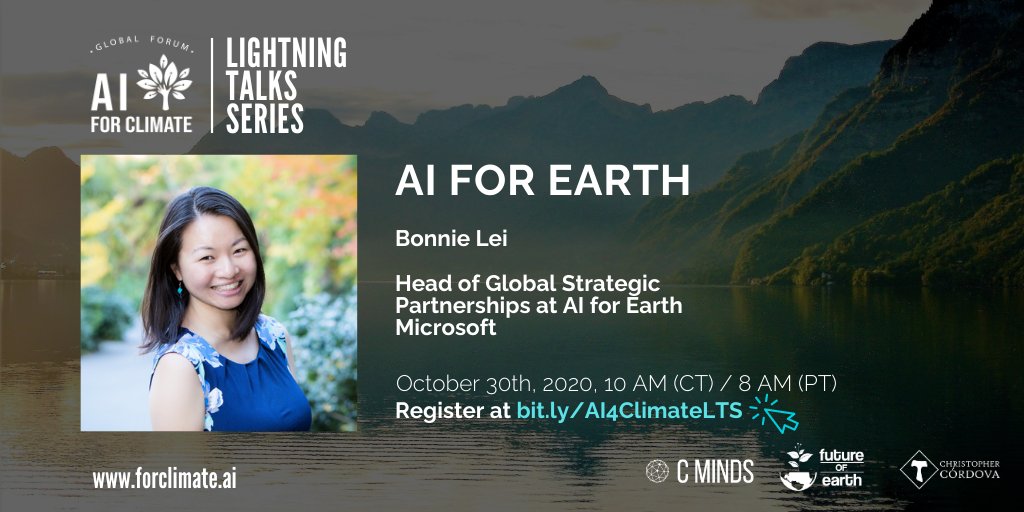
Tech Tutors: How do I train my first machine learning model?
18 June 2020 1:19pm
8 October 2020 9:45pm
Hi Wildlabbers,
Just popping in to share this very cool primer for beginners to embedded machine learning from our tutor Daniel Situnayake! If you're interested in learning more about the basics of TinyML, this is a great resource.
-Ellie
Training Opportunity: HarvardX TinyML Course
 edX
edX
30 September 2020 12:00am
Webinar: Advances in Fisheries Electronic Monitoring
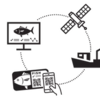 SAFET
SAFET
21 September 2020 12:00am
Monitoring Otters using FIT: Challenges and Discoveries!
6 September 2020 4:52pm
9 September 2020 11:06pm
So interesting, thanks for sharing! It's always really helpful for the community to hear about the trial and error that goes into fieldwork. I also never realized that heat-sensing camera traps don't work on certain animals like otters, really curious to learn more - are there strategies to deal with that problem?? Maybe someone from our camera trap group could chime in on that aspect?
11 September 2020 2:26pm
Hi Ellie,
thanks for your interest. So I have two possible explanations why the camera traps I used did not release, even though I found otter droppings directly in front of my camera (and later my happy face that I must have gotten them this time even though it was not the case).
I. The Cameras I used in that specific campaign where quite old and I am not too experienced in using them so maybe I did not set them up correctly. This is something I will try to overcome with newer cameras and more training in my next field campaign whenever COVID allows me to travel again...
II. Otters are very well insulated having more than 70k of hair per cm2. I found some fabulous infrared images in a book from Irene Weinberger that showed how little heat otters actually emit and that otters only differed significantly from the background radiation at there feet and nose. So another explanation of mine is that unless these bodyparts are captured by the camera's sensor the camera won´t release.
I will try new Cameratraps the next time I will have the opportunity to do fieldwork in Portugal and will let you know how it went. Until then I will try to work my way around it using footprints :-).
Tech Tutors: Review Session
3 September 2020 12:00am
Sustainable Fishing Challenges: Fishing Gear Innovations
19 August 2020 12:00am



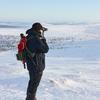



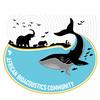

















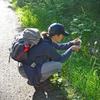


















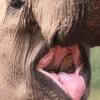







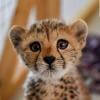
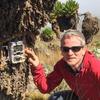


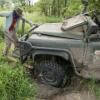

5 February 2021 7:16pm
Dan's comments about the need for technologists and conservationists to manage and share (properly annotated) data struck a chord with me, it was right at the end of the presentation.
I fired off a point into the chat "could your old background data be my background data?" or something similar, and it got me thinking...
(Firstly, sorry for clouding this issue with my simultaneous "Ian Tuna" joke)
In the context of using AI as described in EdgeImpulse example, lets say - audio.
Lets say Group A are trying to detect the roar of lions, and Group B are trying to detect the grunt of wild pigs, and lets imagine that is in roughly the same area of Africa. I mean they could both send out teams to capture the sound of their target animal, and the sound of NOT their target animal, e.g everything else.
Well if "serengetti sounds" was a known audio track, then all you need is the unique sound of the beast in question, am I right?